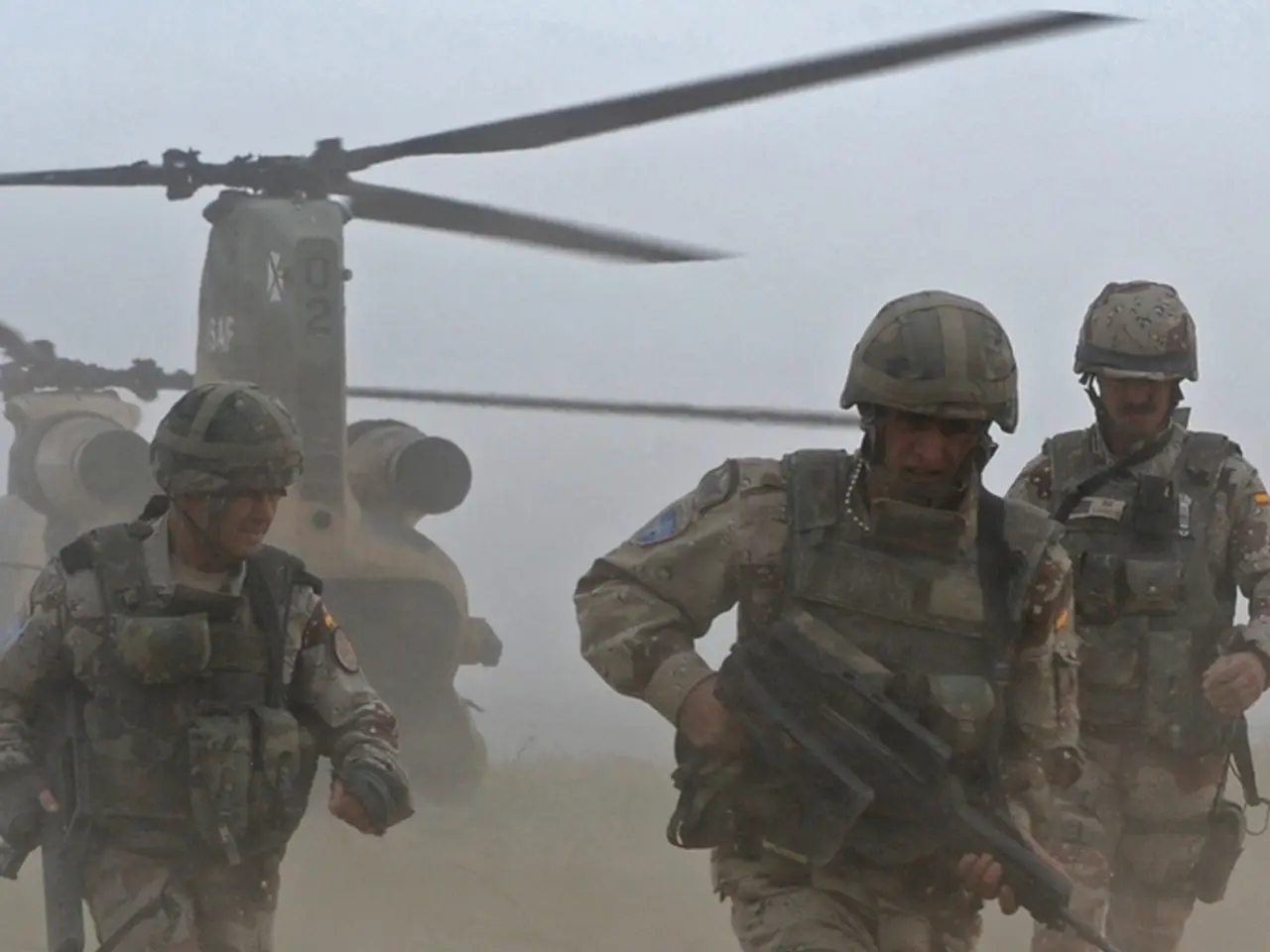Improving Emergency Response Procedures with AI-Equipped Drones
The integration of Artificial Intelligence (AI) with drones is revolutionising emergency response and public safety operations in the United States. Several cities have launched Drone as First Responder (DFR) programs, deploying AI-enabled drones to significantly improve emergency response times and situational awareness [1][3][5].
Huntington Beach, California, for instance, plans to launch a DFR program in September 2025. Drones docked on rooftop stations will be dispatched within two minutes to emergencies, offering a "bird's-eye view" of incidents. Managed from a central command center, these drones are equipped with AI-enabled navigation and imaging, helping officers prepare in advance and improving efficiency [1][3][5].
The future potential of AI-integrated drone operations in public safety is substantial. Advanced aerial mobility (AAM), AI autonomy, and vertical takeoff and landing (VTOL) technologies promise to transform emergency response by enhancing precision, flexibility, and speed for life-saving missions such as EMS, firefighting, and law enforcement [2].
However, challenges remain. Regulatory hurdles, technical reliability issues, and data security concerns are highlighted by industry professionals [4]. Federal regulations historically required operators to maintain visual line-of-sight with drones, limiting autonomous deployments. Some departments have obtained FAA waivers to remotely launch drones beyond visual line-of-sight, enabling faster responses [1].
Privacy and accountability concerns are also significant. Use of drones raises potential privacy issues, particularly regarding surveillance and data collection. Ensuring transparency and oversight remains crucial [5].
Solutions underway include obtaining regulatory waivers, developing trusted AI frameworks, and integrating drone data seamlessly with emergency response workflows to enhance decision-making without overwhelming first responders [2][4].
AI-powered drones are transitioning from experimental to operational public safety assets, with expanding deployments enhancing speed, efficiency, and situational awareness. The ongoing evolution hinges on balanced progress in technology, policy, and ethical safeguards to realise their full potential for first response missions [1][2][3][5].
Fleet management systems are being developed to incorporate AI functionalities such as real-time object detection and tracking directly into their platforms. The preference among professionals is for AI functionalities that are easy to integrate into existing systems without requiring extensive in-house expertise [6].
Companies are collaborating with first responders to develop AI functionalities that meet their specific needs, leveraging emerging technologies like 5G and Drone-in-a-Box (DiaB) solutions. The market gap for AI in drone operations presents an opportunity for innovation and improvement [7].
Our website offers a fleet management system designed to integrate advanced AI functionalities, providing first responders with reliable, secure, and efficient drone operations.
References:
[1] https://www.faa.gov/uas/programs_partnerships/beyond_visual_line_of_sight/ [2] https://www.nasa.gov/feature/ai-in-drone-operations [3] https://www.faa.gov/uas/programs_partnerships/drone_integration_pilot_program/ [4] https://www.faa.gov/uas/policy_guidance/ [5] https://www.chicagotribune.com/politics/ct-chicago-police-drone-program-20210624-6yjg7l575nflh7z5757657776-story.html [6] https://www.dronelife.com/2021/04/26/fleet-management-for-drones-is-evolving-with-ai/ [7] https://www.forbes.com/sites/forbestechcouncil/2021/03/04/ai-in-drone-operations-the-future-of-public-safety/?sh=657b9f46673f
- The integration of advanced AI functionalities, such as real-time object detection and tracking, into fleet management systems is becoming preferred by professionals to optimize drone operations for first response missions.
- The deployment of AI-powered drones in public safety is not just about speed and efficiency, but also about ensuring safety and accountability, as privacy concerns and the need for regulatory oversight should be addressed to ensure transparency.
- Artificial Intelligence is playing a crucial role in the evolution of drone technology, particularly in the realm of emergency response and public safety operations, where the seamless integration with drone-in-a-box solutions and 5G networks can significantly improve situational awareness and response times.




